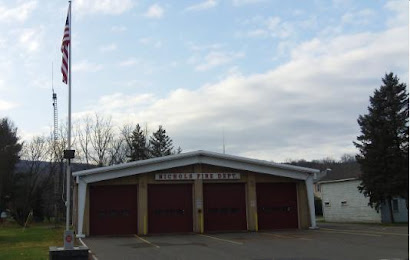NEWS RELEASES:
Peak season for home fires isn’t over; NFPA offers reminders for keeping fire-safe during winter
Half of all U.S. home heating fires occur in December, January and February. That’s according to the National Fire Protection Association’s (NFPA) Home Fires Involving Heating Equipment report, which shows that heating equipment is a leading cause of winter fires. In fact, heating equipment was involved in an estimated 66,100 reported home structure fires in 2008, causing 480 civilian deaths, 1,660 civilian injuries, and $1.1 billion in direct property damage.
NFPA and the U.S. Fire Administration (USFA) are working together to remind everyone that home fires are more prevalent in winter than in any other season. For more information about the organizations’ joint safety campaign, “Put a Freeze on Winter Fires,” and a complete list of winter safety tips, visit www.nfpa.org/winter.
“Winter fires are highly preventable,” says Lorraine Carli, NFPA’s vice president of communications. “Every tragic news story about a devastating winter fire is a reminder that simple precautions can prevent deadly consequences.”
Space heaters resulted in far more fires and fire fatalities than central heating devices. Between 2004 and 2008, fixed (stationary) and portable space heaters (excluding fireplaces, chimneys, and chimney connectors, but including wood stoves) annually accounted for, on average, one-third of reported U.S. home heating fires and four out of five associated civilian deaths.
Meanwhile, an estimated 15,200 reported creosote fires – 23 percent of all home heating fires – annually resulted in an average of four civilian deaths, 17 civilian injuries, and $33 million in direct property damage. Creosote is a sticky, oily, combustible substance created when wood does not burn completely. It rises into the chimney as a liquid and deposits on the chimney wall.
One in four heating equipment fires started due to a failure to clean equipment. Other causes include placing a heat source too close to combustibles, and unclassified mechanical failures or malfunctions. Roughly half of all home heating fire deaths resulted from fires started by heating equipment that was too close to something that could burn, such as upholstered furniture, clothing, or a mattress or bedding.
In addition to heating fires being a concern in the coming months, NFPA would like to remind the public that cooking fires are the leading cause of home fires all year round. This time of year, whether you are feasting on Super Bowl Sunday or simply cooking to warm up on a bitter cold day, it is important to stay in the kitchen when frying, grilling, or broiling. Unattended cooking is the leading cause of cooking fires.
About the National Fire Protection Association (NFPA) NFPA is a worldwide leader in providing fire, electrical, building, and life safety to the public since 1896. The mission of the international nonprofit organization is to reduce the worldwide burden of fire and other hazards on the quality of life by providing and advocating consensus codes and standards, research, training, and education.
"Reproduced from NFPA's Web site, © NFPA (2011)."




